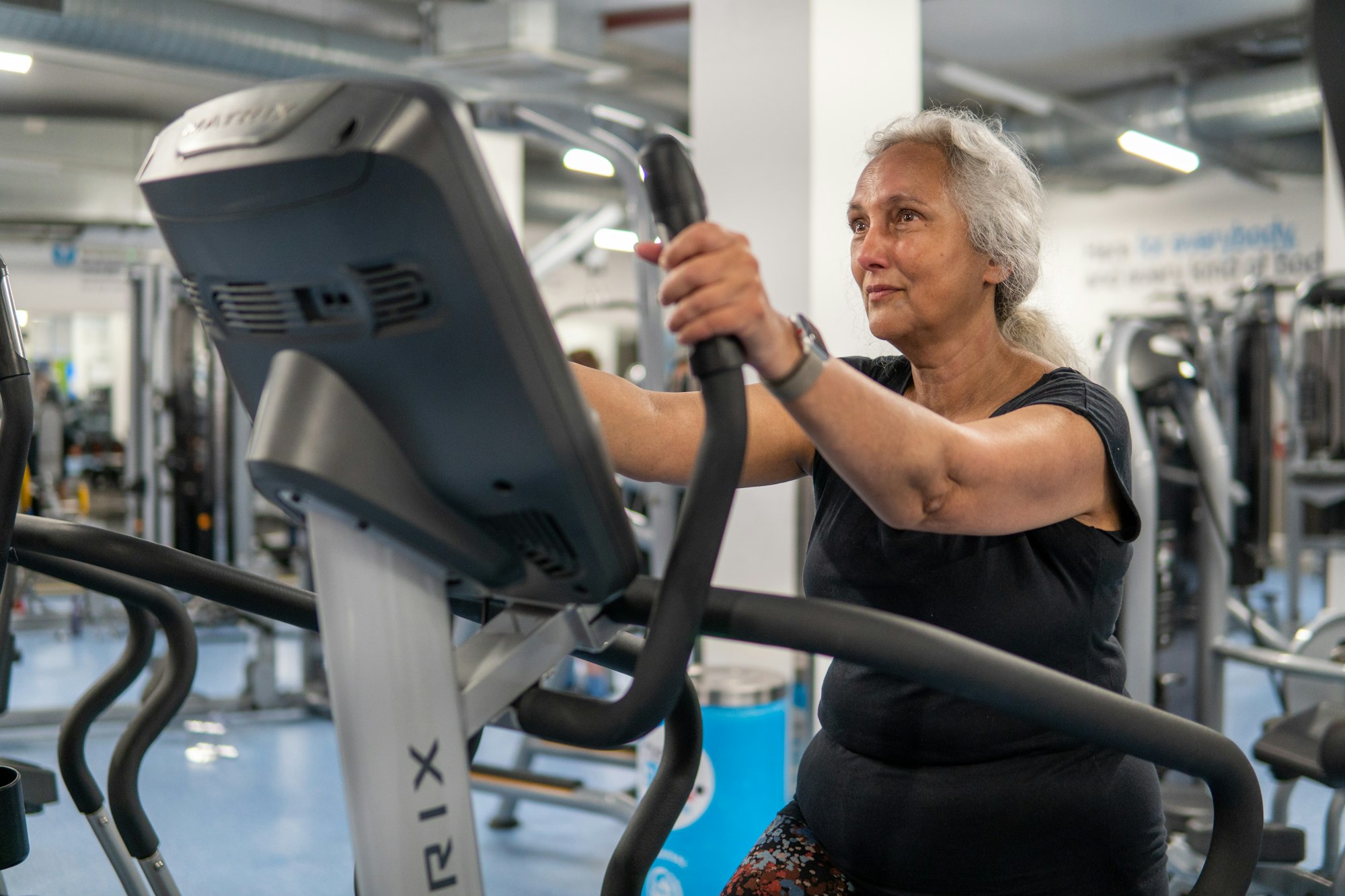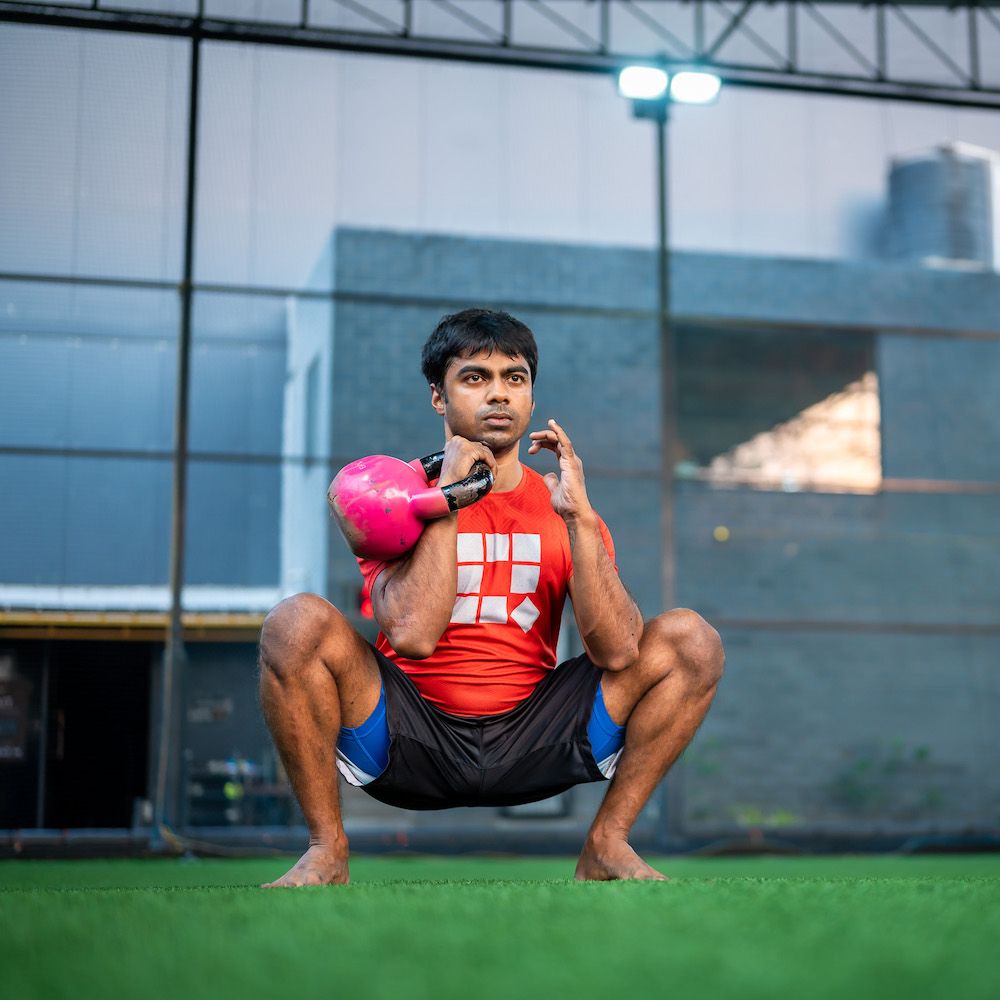Introduction to starting a fitness journey after 40
If you are approaching 40 and concerned that you have not had time to dedicate towards fitness consistently, this article is for you.
You can get fit at any age.
You can get fit regardless of where you are currently.
But. There are some rules/conditions that you need to accept.
No, it is not your current fitness levels or your genetics or access to a good coach or any such thing.

First, fitness is for the long haul.
Second, you will be making progress slower than you'd like.
Third, you will stumble. A lot.
You can get fit starting today if you can accept the above three axioms.
If you cannot accept those, this article and website are NOT for you.
Benefits of fitness for people over 40
Muscles
Nope, not big showy muscles. That's not my jam, nor should it be of much interest to you. As we age, we tend to lose muscle mass. Muscle mass is important to us.
- They are protective. If you fall, well, you have a sturdy piece of tissue that can take the damage. They protect your insides well.
- Muscles promote insulin sensitivity. They improve your overall metabolic health. Diabetes and obesity are two big self-inflicted diseases in our society today. While nutrition and sleep play a big part, muscles go a long way in your preventive health too.
- Weight maintenance is easier if you have more muscle tissue.
- Extra protein storage. Our bodies use proteins (amino acids) for a lot of their processes. In emergency situations, our body can tap into extra protein from our muscles to take care of a problem. This makes recovery from illness and diseases faster.
Bone density
Your bones get stronger and denser. They can handle more stress. If you fall, for example. As we age, one of the biggest health hazards we have is falling and breaking something. Because a fracture at 60 is much harder to heal than one at 20.
With stronger bones, you become more resilient. With more muscle mass on you, your body is more anti-fragile.
You are fighting the good fight against arthritis and osteopenia etc.
Cardio health
Remember, your heart is also a muscle. By sensibly exercising it, you build a stronger heart that is capable of supporting your various functions.
Long-duration, low-intensity cardiovascular work is great for building your aerobic base and improving the blood flow to your body. When you do higher-intensity exercise, the better your aerobic base, the better your recovery will be.
A good combination of interval training and steady-state training will ensure your heart is capable of any demands you might place on it - from carrying your kids up a few flights of stairs to pushing your car if you ever get stranded somewhere, to helping your friends with their couches.
Longevity / anti-ageing
Exercise helps clear out cellular garbage and keeps our cells functioning optimally
-- David Sinclair
Activity is amongst the top tools we have today in the realm of anti-ageing. Sensible fitness activities ensure your body cleans itself up rather well and removes the waste products that make you "old" and all that. You can read more over here on TIME, or listen to a detailed podcast over here.
Joint health
We tend to lose the function of our joints as we age because we are not using them fully. Can you squat? With your butt hovering an inch or two over the floor? Can you hang out there comfortably for a minute or two?
Losing joint mobility means our bodies are not going to move optimally. It means other joints will start to move in places where they are NOT meant to. Which results in pain, or in worse situations, injuries.
Let me give you an example. When our hips are not mobile to squat low, we bend our lower back when picking up a weight off the floor. And with that weight, we straighten our lower back. Moving the spine under load, especially due to compensation from poor joints above and below it, is a common cause of injury. The fix for these is two-fold. First, improve hip mobility. Second, add resilience to the lower back. These can only happen via sensible fitness training.
Understanding your body and limitations
To achieve your fitness goals, it's crucial to understand your body's limitations. First and foremost, assess your current physical state to determine where you stand. Pain, joint limitations, and health issues are all constraints that require a thorough understanding.
Once you have a clear understanding of your limitations, it's time to construct a workout plan that fits your unique needs. Though you can find plenty of free or cheap training plans online, it's best to seek expert advice. By tailoring a workout plan that works for you, you'll make progress safely and inevitably. However, if you're eager to dive into the planning process, that's great too! You don't have to be a strength coach to understand your fitness better, and I'm always here to help.
Importance of consulting with a doctor
Do consult a doctor. Get a bunch of tests done - your blood work, your heart health etc. This will help you understand your current place, as well as dive deeper into any potential issues you have going on. Hopefully, there is not anything major, but safety is the priority.
Setting realistic fitness goals
While the actual answer is a lot of "it depends", let me recommend a few milestones and goals for you.
Your first major stop should be to
- be pain-free
- regain most, if not all, of your joint mobility
- be active for about ~150-200 minutes/per week

Post that, you can start looking at what to do. Here are my recommended milestones:
- Goblet squat about 25% of your body weight for 10 reps
- Press about 20% of your body weight for 10 reps/arm
- Walk for 60 minutes at a brisk pace
- Walk up 10 flights of stairs
- Touch your toes with your knees locked
If you can do all these, amazing! Post this, we can start looking at things like Zone 2 training, interval training, strength training and power work and all that jazz.
A sample training plan
Here's a plan for 8 weeks that will show improvements in your joint health, and in your base strength and conditioning levels.
Strength-A
Do 3 sets of 10 reps/side of:
- step-ups
- crawl
- banded glute bridges
Strength-B
Do 3 sets of 10 reps/side of:
- lateral step-ups
- pushups (find your right version)
- banded knee clam
Conditioning-A > Walk
Walk for 45 minutes.
In every session, your goal is to walk more distance than the previous session, in the same 45 minutes.
When you cannot increase distance, increase the time to a total of 60 minutes.
And when you are unable to cram more distance into this time, start wearing a backpack with 3-5 kilos of books in it.
Conditioning-B > Stairs
Set a timer for 30 minutes.
- Climb up one flight of stairs.
- Take 5 relaxed breaths.
- Climb up two flights of stairs.
- Take 10 relaxed breaths.
- Climb up three flights of stairs.
- Walk back down three flights of stairs.
- Breathe, chill, and repeat when your breathing is back to normal.
Note down how many total flights of stairs you are climbing in 30 minutes.
When your heart rate does not climb up much and the 1-2-3 becomes too easy, change it to 2-3-5.
When that becomes too easy, well done!
How to use this plan?
- Monday: Strength-A
- Tuesday: Conditioning-A
- Wednesday: Rest
- Thursday: Strength-B
- Friday: Conditioning-B
- Saturday: Rest
- Sunday: Rest
You can do more. Or you can do less. Find a number that's repeatable every week and every month.
Other lifestyle DOs
This is an article that focuses on the activity part of it. But nothing is complete without a minimum focus on our lifestyle.
- Sleep (at least) 7 hours.
- Eat vegetables. Eat protein. Drink water.
- Don't work too much.
Staying motivated and overcoming obstacles
Are you ready to crush your fitness goals and overcome any obstacle that comes your way? Let me tell you, it's not going to be a walk in the park. You'll stumble and slip up, but don't worry, it's all part of the process. The key is to stay motivated and consistent.
Listen, it's not about how many times you hit the gym per week or for how long. It's about being active consistently over time. Trust me, being active 3 times a week for a year is worth more than 6 times a week for 6 months.

But let's be real, sometimes things get complicated. That's when you need to simplify and put in the effort. And if you need some inspiration, talk to someone who has been there before.
At The Quad, I've worked with countless people who have started or restarted their fitness journey after 40. And let me tell you, it's possible and it's fun! All you have to do is show up and do it your way.
So what are you waiting for? Don't hesitate, get started and improve your quality of life. I wish you the best of luck on your fitness journey!
Conclusion
You can get fit at any age.
You can get started at any time.
Sensible fitness training will add immensely to your quality of life.
Don't hesitate. Get started. Do it your way!
And good luck.
